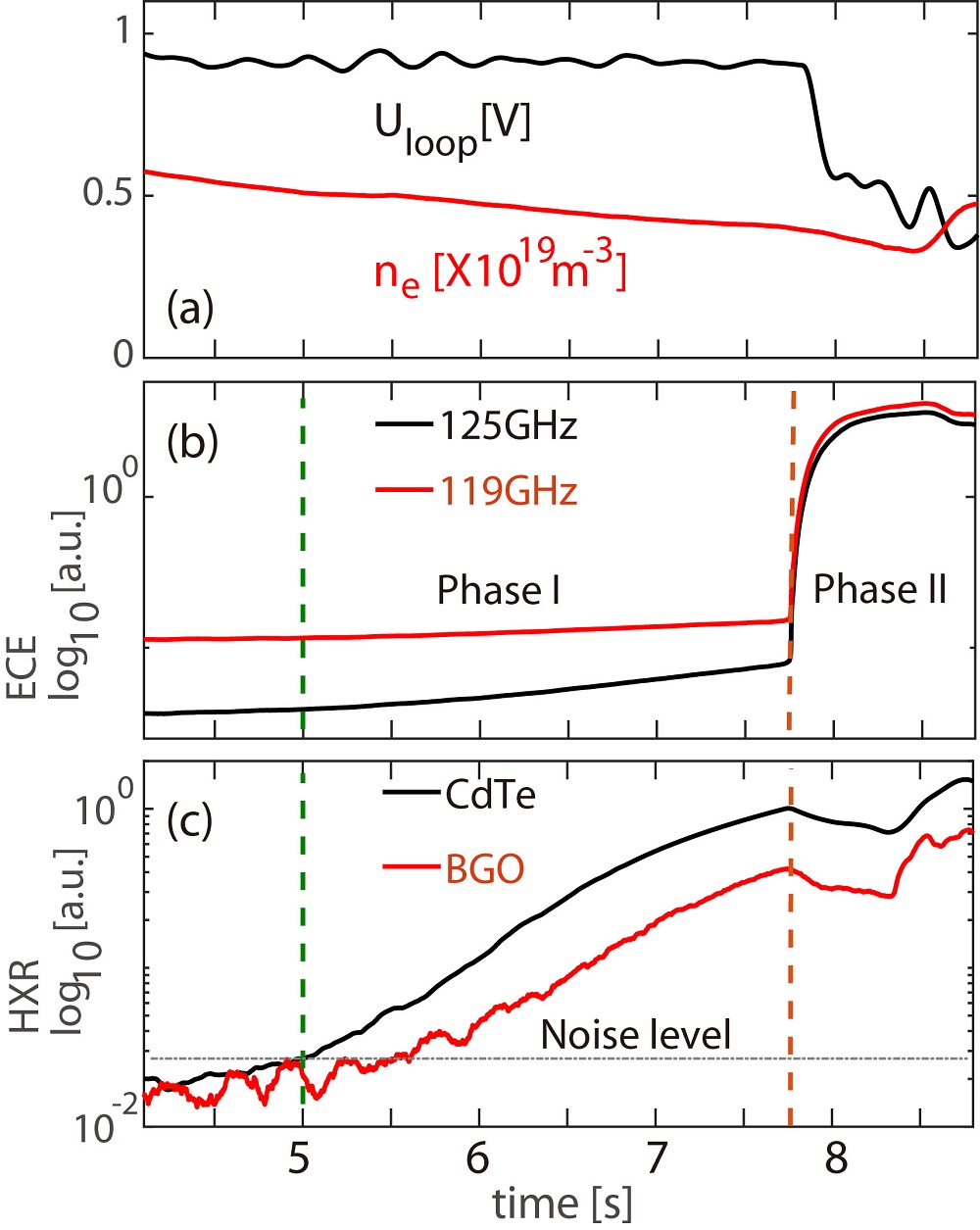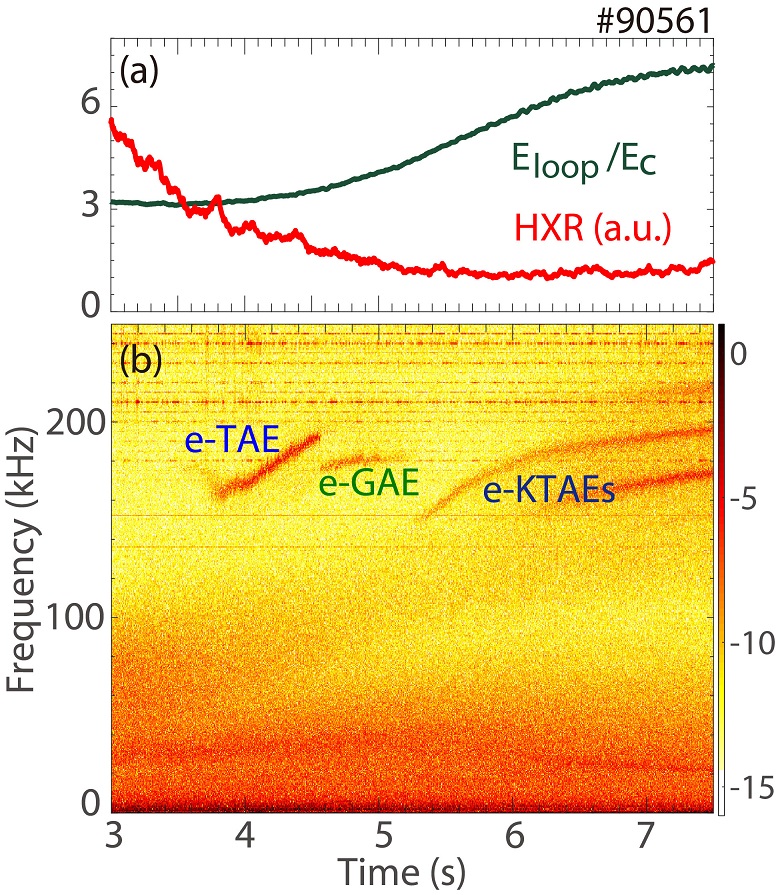Speaker
Description
$\quad$Plasmas with a high runaway electron (RE) current fraction, $f_{RE}$ > 0.5, have been achieved during the flat-top of EAST Ohmic discharges with both a circular limited and an X-point diverted configuration. Low toroidal mode number Alfvén eigenmodes (AE) in the frequency range of 100-300kHz including TAE, KTAE and GAE, which are excited by low-energy REs, are clearly identified in the quiescent regime. Operation in the quiescent regime including accurate measurement of all key parameters related to REs provides a suitable experimental platform for RE excitation and dissipation, which could potentially have beneficial implications to the post-disruption RE regime $^{[1]}$.
$\quad$Extremely low-density operation ($n_e$ < 4*10$^{18}$ m$^{-3}$) free of error field penetration supports the excitation of fruitful quiescent RE populations $^{[2]}$. By slowly letting the density ramp down during the flattop, REs are firstly confirmed by visible hard X-rays (HXRs) and electron cyclotron emission (ECE) and then the signals of HXRs and ECE grow fast, indicating that amount of REs are generated due to the avalanche process, as shown in figure 1. At a lower density, a transition from growth of HXRs and ECE to saturation are simultaneously observed. Meanwhile, a large drop of the surface loop voltage (down to <50% of the loop voltage value before this transition) is found, indicating the replacement of the resistive plasma current by that carried by the REs.

$\quad$ After the transition, continuing to ramp down the density does not raise the toroidal electric field ($E_{loop}$) and the amplitude of HXRs and ECE keeps constant, supporting that the stable characterizations of the RE current fraction and the energy distribution in the regime. Also, the saturated electric field is ~8 times above the theoretical critical electric field for avalanche growth ($E_C$) but lower than the threshold electric field for Dreicer generation (12-20 * $E_C$).
$\quad$ During low-density ohmic discharges, a bump on energetic electron energetic distribution is formed. Low toroidal mode number Alfvén eigenmodes (AE) in the range of 100-300kHz, including TAE, KTAE and GAE, are excited by energetic electrons and detected by magnetic signals and reflectometry, as shown in figure 2. These activities strongly correlate with evolution of energetic-electron energetic distribution.

$\quad$Besides, Multiple KTAEs excited by energetic electrons $^{[3]}$ and geodesic acoustic mode have been simultaneously observed. Three-wave interactions between these modes are conclusively identified, indicating fixed phase relationship. This nonlinear coupling, may lead to SAW instability nonlinear saturation, as well as EP energy channeling through KTAEs into the GAM, and eventually, bulk plasma heating through GAM collisionless damping $^{[4]}$].
This material is based upon work supported in part by the National Key R&D Program of China under Contract No. 2017YFE0301205, the National Natural Science Foundation of China under Contract No. 11775267, and Youth Innovation Promotion Association of Chinese Academy of Sciences under Contract No. 2017480.
References
[1] P. Aleynikov and B. Breizmann 2015 Phys. Rev. Lett. 114 155001
[2] L. Zeng et al 2016 43rd EPS conference on Plasma Physics, Leuven, Belgium, O4.112
[3] F. Zonca and L. Chen 1996 Phys. Plasmas 3 323
[4] Z. Qiu et al 2018 Phys. Rev. Lett. 120 135001
| Affiliation | Institute of Plasma Physics, Chinese Academy of Sciences, Hefei 230031, China |
|---|---|
| Country or International Organization | China |
